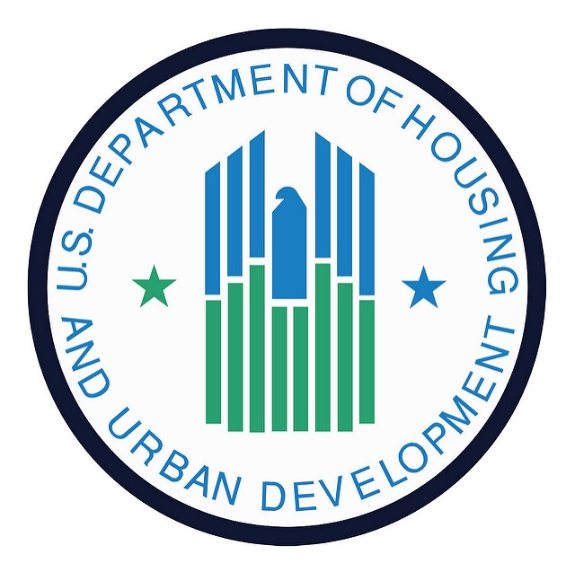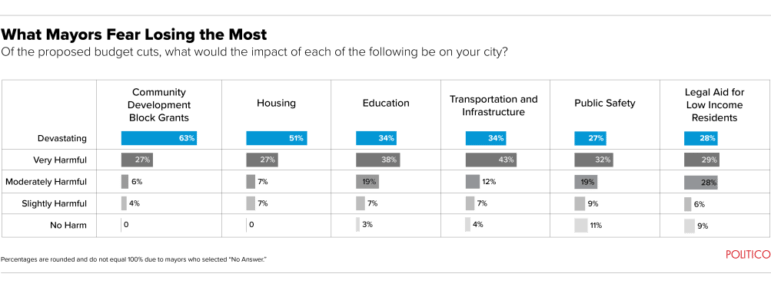
May 1, 2017; Syracuse Post-Standard
The new federal spending agreement that’s due to be voted on by Friday of this week shows no cuts to the $3 billion budget for Community Development Block Grants. More than 1200 localities and community groups depend upon the CDBG program, which is overseen by HUD and has been a mainstay of community funding since 1974, when Gerald Ford created it as a source of flexible funding to be devoted in a tailored way to local community development needs.
The program requires local citizen participation in the disbursal of the money and requires that it benefit low- and moderate-income residents. But the very flexibility that has made it something of a godsend to communities is exactly what President Trump appeared to object to in his proposed budget, where he charged that CDBG “is not well-targeted to the poorest populations and has not demonstrated results.” The George W. Bush administration rated the program as “ineffective” in its “ExpectMore.gov” accountability project, and HUD officials have acknowledged that few evaluative studies have been done of CDBG. However, many disagree with these assessments, including a sampling of the country’s mayors surveyed by Politico.

On April 3rd, the U.S. Conference of Mayors sent a letter to Congress that reads, in part:
Since FY 2005, the U.S. Department of Housing and Urban Development (HUD) has collected accomplishment data for the CDBG program. The data highlight the program’s flexibility to design and implement strategies tailored to meet local needs and priorities. It has provided funds in every state, including housing investments, public infrastructure improvements, and economic development, while also providing public services, including services for seniors, youth, the disabled, and employment training. Despite being a key tool for aiding our communities, the CDBG program, like many programs, has taken a share of deep cuts in recent years, falling substantially—by nearly $1.4 billion since FY2001. While the program helps more than 1,200 cities, counties, states, and rural areas meet the needs of low and moderate-income people and communities, funding cuts have severely weakened the ability of grantees to revitalize their communities and respond to local need. We share your commitment to the most effective use of taxpayer dollars and believe that these grants have proven highly effective. Based on the data that grantees have reported to the U.S. Department of Housing and Urban Development over the past nine years (FY2005–FY2016), CDBG has:
Sign up for our free newsletters
Subscribe to NPQ's newsletters to have our top stories delivered directly to your inbox.
By signing up, you agree to our privacy policy and terms of use, and to receive messages from NPQ and our partners.
- Helped over 1.3 million low- and moderate-income persons through single-family, owner-occupied rehabilitation, homeownership assistance, energy-efficient improvements, and lead-based abatement, among other activities;
- Created or retained 387,109 jobs for low- and moderate-income people through a variety of economic development activities;
- Benefited over 42 million low- and moderate-income persons through public improvements including senior centers, child care centers, and centers for people with disabilities;
- Benefited over 133 million low- and moderate-income persons through public services such as employment training, meals and other services to the elderly, services for abused and neglected children, assistance to local food banks, and other services;
- Helped Seniors Live Independently. CDBG funds are used to rehabilitate the homes of low- and moderate-income elderly persons to allow them to age in place, thereby, avoiding costly assisted living and nursing home care. CDBG provides resources to Meals on Wheels and other local food programs to ensure our low- and moderate-income seniors receive daily nourishment and contact. Further, CDBG funds are used to build community centers to allow seniors to receive health and recreational services to stay engaged and healthy;
- Strengthened Families and Communities through Homeownership. CDBG funds are used to assist creditworthy, working for families with down payment and closing cost assistance to purchase a home. Homeownership stabilizes neighborhoods, allows families to build assets, and adds to the local tax base;
- Created Safer Communities. Local communities use CDBG to work with local police departments and neighborhood leaders to fight crime and make neighborhoods safer places to live and work by creating and expanding neighborhood watch groups, making safety improvements to homes and businesses, and encouraging local police sub-stations to move into high crime areas;
- Invested in Our Next Generation. Local communities use CDBG funds to provide afterschool programs to low-income children, summer jobs for low-income youth, and build recreation centers to provide a safe outlet for learning, sports and personal growth.
Additionally, every $1.00 of CDBG leverages an additional $3.65 in non-CDBG funding.
CDBG makes its way into the local economy through an extensive network of local organizations and remains a lifeline for families and communities. It is one federal program that touches the lives of nearly every American in some fashion.
Of course, as we mention in today’s feature, these battles will likely need to be refought this summer and early fall as the fiscal year budget is developed.—Ruth McCambridge
CATEGORY:
TAGS:













